Siemens: Innovation Drives the Future
In September 2015, I participated in annual Siemens PLM analyst conference at Boston. Executives from Siemens and reference customers made presentations about the vision, strategies, industry solutions, products updates and case studies in each sector. This paper analyzes key points of the conference.
Siemens CSO Dr. Horst J. Kayser illustrated the positioning and importance of digitalization technology from the view of Siemens Group level. He believes that digitalization will generate disruptive power and change present business models. It will bring customers into production process and become a Prosumer. Dr. Kayser said that in order to answer this transformation in digitalization trend and close the loop of CPS system, Siemens has invested nearly 4 billion Euros in digitalization software and services.
Siemens PLM initiated this smart-innovation-platform-based digital enterprise since 2014. This year, Mr. Chuck Grindstaff, Siemens PLM CEO gave a speech—Innovation for the Future, from which we can see clearly that Siemens PLM has completed its function of smart innovation platform and architecture definition. It has improved in both connotation and feasibility. Now, it is very practical and realistic to promote this platform.
Chuck pointed out that future products are getting smarter and more complex, and time to market getting shorter. For example, when Nissan is making plans for Nissan Power 88, they hope to release an all-new vehicle every six weeks for six years, while traditional model development cycle would last for several years.
Therefore, it makes that very important for setting up a complete platform to support product innovation. The platform should know how to produce a product and should virtually simulate its functions for practical application scenarios. When it comes to manufacturing products, intelligent manufacturing system should perceive all these information and make intelligent decision for optimized and distributed manufacturing.
In Chuck’s opinion, digitalization technology has always been a driver in business model evolution. Advanced technologies such as crowd sourcing design, 3D printing, system driven product development, and advanced robotics are keeping transforming enterprises’ digital progress.
We can see from this year that Siemens PLM has further improved its Smart Innovation Portfolio that was released last year. It still has the same four core functions.
1. Engaged Users. Right information, right time, right context.
2. Intelligent Models. Knowing what they are and how they are made.
3. Realized Products. Virtual product and real production.
4. Adaptive System. Easy deployment today and flexibility for tomorrow.
Chuck pointed out that Siemens PLM can provide solutions in each dimension and will provide complete solutions through mergers and acquisitions to help enterprises overcome various innovation challenges.

Siemens Smart Innovation Portfolio
One typical case of Smart Innovation is Siemens Amberg Plant. It has only 1,000 staff and an area of 10,000+ square meters. With 20 years’ continuous improvement through Siemens digitalization technology, this plant has increased its productivity by 8 times with no expansion of production size or staff members.
Now, Siemens Amberg Plant can produce 1,000+ product variants with 99.9988% quality rate. With a high automation level, production equipment and computers can automatically get 75% of work done. Only the rest 25% is finished by human workers. They just put a printed circuit board onto the production line at the begging of production, then all the rest of work can be finished by machine automatically.
Siemens Electronics Works Chengdu (SEWC) also copied this practical experience. In September 2013, the more advanced Siemens industrial automation product SEWC officially put into operation. Many Siemens PLM executives believe that SEWC is one of the most advanced electronics plant in the world so far. It can even be rated as a paradigm of Digital Enterprise.
2. Siemens Digital Enterprise Solution
The highlight of this conference is Siemens Digital Enterprise Solution Software Suite which is realized through the collaboration between PLM software portfolio, MES/MOM software portfolio, and integrated automation portfolio. Its PLM software portfolio contains product planning, design, test and simulation, and production planning, engineering and simulation and is top-down product driven. Integrated automation portfolio is bottom-up process driven and contains integrated engineering and runtime for controllers, distributed I/O, HMI, drives, motion control and motors, as well as industrial safety and security. MES/MOM software portfolio can seamlessly integrate with PLM and automation portfolio. It contains planning and scheduling, quality management, manufacturing execution, manufacturing intelligence, SCADA/HMI.
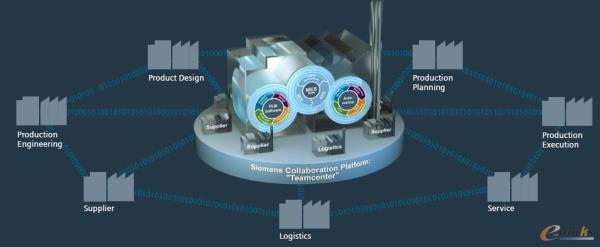
Architecture of Siemens Digital Enterprise Solution Software Suite
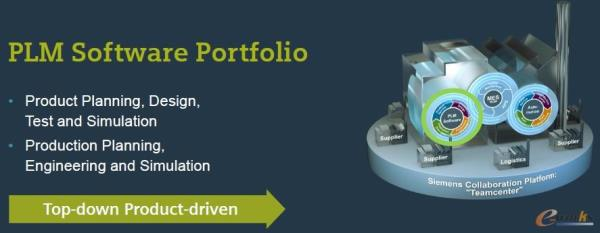
Siemens PLM Software Portfolio

Siemens Integrated Automation Portfolio
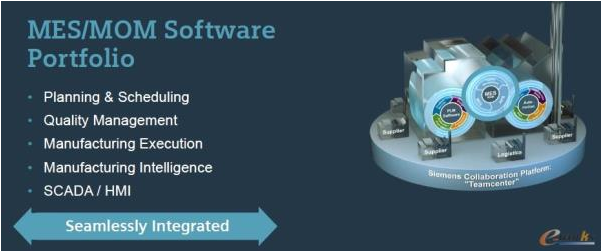
Siemens MES/MOM Software Portfolio
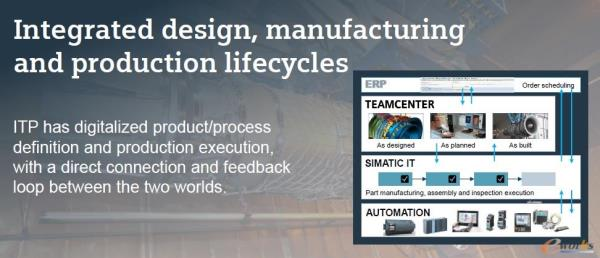
Use Case of Spain ITP
3. In-depth cultivation in industry applications
Siemens PLM focuses on 8 major industry sectors and continuously improves these industry solutions in breadth and depth. A best practice will be extracted from each industry according to industry business process and process flow. Then different software combines as an industry solution. At the same time, Siemens PLM continuously add industry Catalyst to enhance its functions.

Siemens PLM’s 8 major industries
For example, Siemens PLM industrial machinery solution focuses on modular design, Engineer-To-Order or Configure-To-Order process, and integrated electrical design. Customers can be highly satisfied by its smart innovation software and industry Catalyst that tailored for industry specific requirements. Teamcenter PLM now integrates with some mainstream integrated electrical design software like EPLAN to manage machinery design and electrical design as a whole.
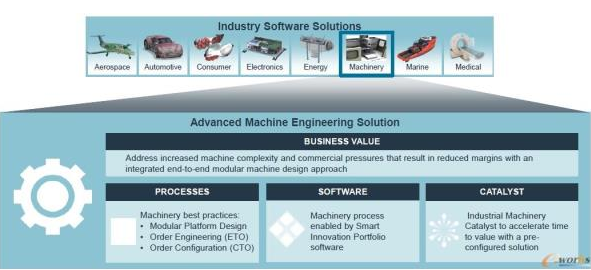
Siemens PLM Industrial Machinery Solution

Siemens PLM Industrial Machinery Catalyst
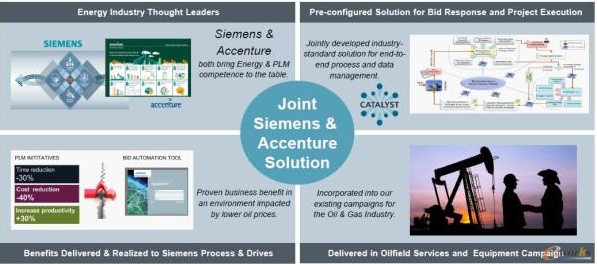
Joint Siemens Energy and Utilities Industry Solution with Accenture
4. Assist Haier in building ecosystem of interconnected plants
Haier is Siemens PLM’s another digitalization paradigm in China. Mr. Leo Liang, MD & CEO of Siemens PLM Software Greater China solemnly introduced the typical case and invited Ms. Ruixian Wang, Haier R&D Senior Manager shared their interconnected ecosystem. I was very excited to see the Haier experience sharing because it represents not only Made-in-China products are starting going abroad but also their IT application experiences are becoming industry best practices.
Haier Interconnected ecosystem is tailored for its interconnected plants. In Haier’s vision, end users are not only consumers but also product creators. Now Haier realizes 40 intelligent unmanned interconnected lines and more than 700 automated production processes. Interconnected plants are no concepts but alive and growing ecosystems. It can better satisfy users’ customization requirements and realize real value for manufacturing enterprises through providing Best User Experience.

Siemens PLM enabled Haier’s transformation
Siemens PLM enables Haier’s transformation in each stage including transforming from mass production to mass customization. In 2008, Haier finished modularization of product design and manufacturing and completed virtual design and entity manufacturing. In 2012, Haier started exploring interconnected plants from one unmanned process to one unmanned workshop, one automated plant and finally to the interconnected plant. In continuous exploration and trial-and-error learning, Haier becomes a leader in Chinese manufacturing transformation.
Based on Teamcenter product development platform, Haier built a series of innovation enabled tools and technologies. According to Ms. Ruixian Wang, Haier’s ultimate goal is to realize a real-time interconnection of end users in the whole process and zero distance between users and plants. The whole process is transparent and can be traced in cloud.
Interconnected plants largely increased Haier’s productivity with a 30% increase of overall efficiency, 30% increase of product satisfaction, and 50% reduction of product research and development cycle. In past several years after the implementation of this program, Haier has sold out over 1 million intelligent household appliances and realized a 10-fold revenue growth enabled by this personalized customization platform.
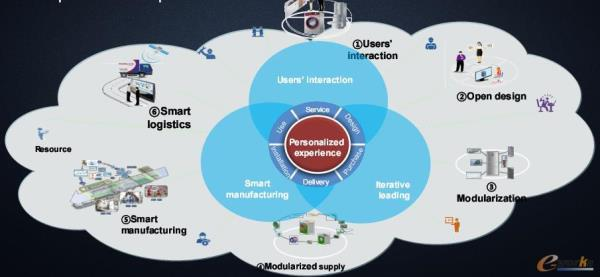
Haier’s Ecosystem of Interconnected Plants
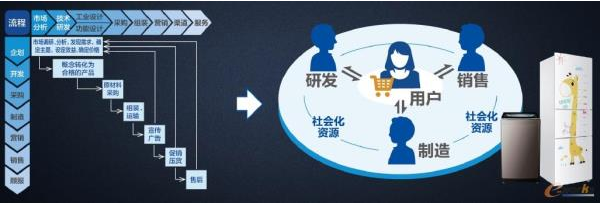
The process transform: from connection in serious to connection in parallel
In the process of building interconnected plants, Haier also met many challenges, said Ms. Ruixian Wang. For example, breaking through the closed series process with enterprise as the center and establishing the open and paralleled process with users as the center. Based on Siemens PLM technologies, Haier completed a series of technology integrations and has realized a parallel implementation of six technical indicators—standardization, perfection, modularization, automation, digitalization, and intelligentization.
In these indicators, modularization is the foundation to support users’ participation in design and customization; automation combines the automated production and users’ personalized customization; digitalization enables synchronization and sharing of value chain information and users’ order and evaluation will be delivered to related parties; intelligentization builds digital “twins” of virtual and real.

Haier’s exploration on Digital twins
Based on these explorations, Haier set up the first interconnected plant in the world—Shenyang Freezer Plant. Usually in traditional manufacturing plant, one product line can produce 20 different product models, but Shenyang Freezer is highly flexible. It can produce over 500 models of freezer. In terms of delivery, other manufacturers’ delivery cycle is over 20 days while Shenyang Freezer reduces that to 7 days and it can reduce more. The whole manufacturing process is transparent and visible. Usually, a Haier freezer is comprised of over 30 parts but now these parts are reduced to 23 modules through modular design. Workers are no longer assembling the parts but modules. Some of these modules are variable and some are invariable. Engineers can change the variable modules according to different user requirements. It also brings changes on production layout that production lines are cut by nearly a half.
Haier’s other global manufacturing bases including Foshan Front Loading Washing Machine Plant are copying this interconnected plant. With the help of Siemens PLM digitalization technology, user customization and interconnected and visible manufacturing can be realized.
The case of Haier made a stir in the audience. Many experts of well-known research institutes came to discuss the case with me.
5. Siemens PLM Cloud Strategy
Mr. Steve Bashada, Siemens PLM SVP specially introduced Siemens PLM cloud services strategy. According to Steve, although Siemens PLM has different strategies for different product lines, the truth is that Siemens PLM Software’s cloud applications are ready for users.
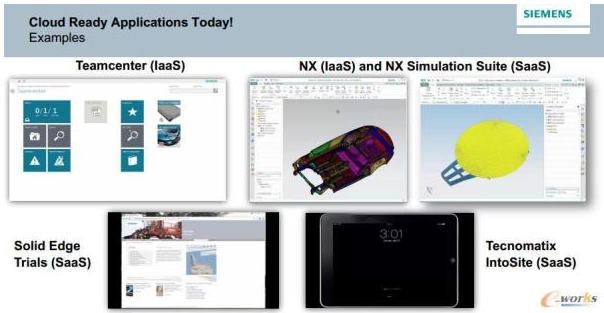
Siemens PLM Cloud Service Solution
In the wave of technology development, simplifying IT, bringing out cloud applications, and embracing big data are three new challenges Siemens PLM has to face. Dr. Horst J. Kayser pointed out that in 2020 network users would increase from 3 billion in 2013 to 4 billion and connected devices would increase from 8 billion in 2013 to 20 billion. Five years later, connected devices will be 5 times the amount of human population. Data produced from sensors, machines, smart power grids, and controllers will achieve 18 zettabyte.
The upsurge of data also brings large opportunities for cloud technologies and big data. Siemens PLM now is ready to take a bite of this market. In June 2015, Siemens launched Omneo big data platform, which was one achievement of Camstar acquisition in 2014. It is the latest SaaS-based Omneo application. Based on big data analysis, Omneo can provide product performance information for their customers. It can monitor the whole supply chain data and customer experience and analyze billions of data combinations in seconds. Omneo can do predictive analytics through excavating hidden information from product data sources.
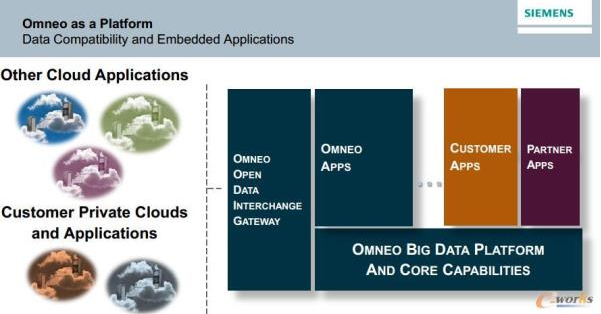
Omneo big data platform
Steve said that Omneo could fully leverage big data analytics technology to analyze data from field services, manufacturing, CRM, ERP and IoT and helped enterprises find out problems proactively before deliverying product to customers. It is the goal for any kind of business.
During the conference, Siemens PLM organized a visit to John F. Kennedy Presidential Library and Museum. I am starting interested in American histories in 1960s and 1970s after the visit. I read some books and studied history of Kennedy family and Vietnam War. It really is an unforgettable experience for me.
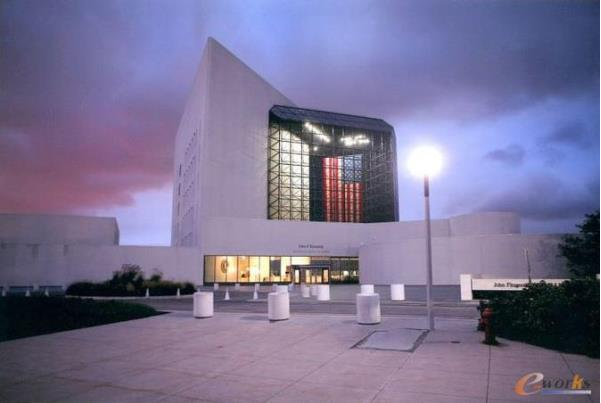
John F. Kennedy Presidential Library and Museum
Acknowledgements: thanks for Mr. Yang Wang, e-works Chief Reporter’s contribution to this article.








